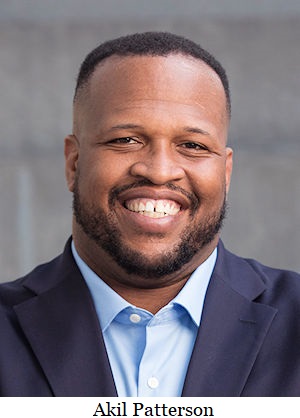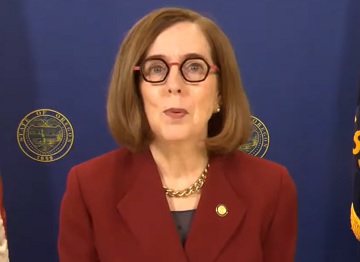
On this day, August 25, 2020, police in the city of Portland declared a gathering of hundreds of protesters outside City Hall as a riot, ordering the crowd to disperse or face arrest. About 200 demonstrators assembled downtown at Shemanski Park before marching to the City Hall, where some in the crowd broke glass doors and smashed a door switch.
 Post an Event
Post an Event
| Benton County Republicans’ Private Fundraising Event, “Bent-on Boots and Bling” with Trey Taylor |
| Friday, September 5, 2025 at 5:00 pm |
| Featuring Trey Taylor
Music Private Event
Friday, September 5, 2025 5:00-5:30 pm VIP Reception
5:30-8:00 pm Heavy Appetizers,
Auction, Concert
Red: $750 VIP Reception
Front Row Table Sponsor
White: $500 Table Sponsor
Blue: $50 per person
Limited Seating. Get Yours Now!!!
Support Local
Dress up: Bling, Cowboy, Patriotic Benton County Republican
FUNDRAISER
www.BentonGOP.org
Get your tickets today at:
https://www.bentongop.org/event-details/benton-county-republicans-fundraiser/form
About Trey:
Trey is the youngest African American Man in Country Music History. The Denver Post wrote
"It's impossible to miss his enthusiasm. With a fondness for cowboy boots, gaudy colors and dazzling jewelry, Trey Taylor could stand toe to toe with any of the Pop, Country or even Rap
contemporaries of his generation.“ |
| Trysting Tree Golf Club, 34028 NE Electric Rd., Corvallis |
The Board was created to protect against the high costs of prescription drugs
The Prescription Drug Affordability Board will meet on August 3 at 9:30am to
consider several items.
The Prescription Drug Affordability Board consists of five members and three alternates appointed by the governor. The Board was created by
SB 844 during the 2021 regular session to protect Oregon residents, state and local governments, commercial health plans, health care providers, pharmacies, and other stakeholders in the health care system in Oregon from the high costs of prescription drugs.​ The board includes Akil Patterson, Chair, Shelley Bailey, Vice Chair, Daniel Hartung, and Richard Bruno. Persons wishing to participate should
register in advance.
To sign up for public comment, email your request to Prescription Drug Affordability Board at
pdab@dcbs.oregon.gov 24 hours before the meeting. Include your name, organization, and the related agenda item. Written comments need to be provided 72 hours prior to scheduled meeting. Any written comments after 72 hours will be included for board consideration at the next meeting. Send comments to
pdab@dcbs.oregon.gov and include your name, organization, and the related agenda item.
Among the items to be considered is distinguishing between recommendations in Sections 5 and 7 in
SB 844
SECTION 5. No later than December 31 of each year, the Prescription Drug Affordability Board shall report to the Health Care Cost Growth Target program established in ORS 442.386 and to the interim committees of the Legislative Assembly related to health, in the
manner provided in ORS 192.245, the following information:
(1) Price trends for the list of prescription drugs provided to the board by the Department of Consumer and Business Services under section 2 (1) of this 2021 Act;
(2) The prescription drugs that were reviewed under section 2 of this 2021 Act; and
(3) Recommendations, if any, for legislative changes necessary to make prescription drug
products more affordable in this state
SECTION 7. (1) The Prescription Drug Affordability Board shall study the entire prescription drug distribution and payment system in this state and polices adopted by other states and countries that are designed to lower the list price of prescription drugs including but not limited to the following options: (a) Establishing upper payment limits for all financial transactions in this state involving a drug and specifying the methodology used to determine the upper payment limit that does not undermine the viability of any part of the prescription drug supply chain;
(b) Using a reverse auction marketplace for the purchase of prescription drugs by state and local governments; and
(c) Implementing a bulk purchasing process for state and local governments to purchase prescription drugs.
(2) No later than December 31, 2022, the board shall complete the study described in subsection (1) of this section and report to the interim committees of the Legislative Assembly related to health in the manner provided in ORS 192.245:
(a) The board’s findings including findings for each option described in subsection (1) of this section; and
(b) Recommendations for policies to lower the list prices of prescription drugs sold in this state and for legislative changes necessary to implement the policies.
--Staff Reports| Post Date: 2022-07-27 07:07:07 | Last Update: 2022-07-26 18:06:03 |
There are very few facilities in Oregon for live fire training
Initiative Petition 17 -- now
ballot measure 114 -- recently approved to appear on the ballot in November, has been described as “the most extremeâ€
gun control measure in the country. While the media has portrayed the measure simply about “large capacity magazines†and “permits to purchase†it, in fact, goes much further than that. The Chief Petitioners are Walter John Knutson, III, Michael Z. Cahana, and Marilyn Keller.
Before a person can get a “permit†to purchase -- not carry, or bear -- a firearm they will be required to take a class from police, or someone approved by police. Firearms instructors who teach concealed handgun license classes will not be eligible. In addition to gun safety, the class must include instruction on storage and transportation, state and federal laws, and the impacts of homicide and suicide.
Furthermore, the class must include live fire. There are very few facilities in Oregon for live fire training and most of them are private organizations not open to the public. The measure does not require that these classes be made available by law enforcement and has no provision for funding them. There are no caps on the fees that may be charged for the classes should anyone actually provide them.
After a person completes the required class -- and there are no exceptions for police or even firearms dealers -- they may then apply to the local police or sheriff for a permit to purchase.
Once the application has been made, the Oregon State Police must conduct a background check on the applicant. There is no time limit on how long the OSP can take to complete the check. Current wait times for gun purchase background checks have exceeded two years for some applicants.
A D V E R T I S E M E N T

A D V E R T I S E M E N T
If the background check clears the applicant, the sheriff or chief of police has 30 days to issue or deny a permit to purchase. The State Police and the local police may conduct any investigation they want to on the applicant. There are no limits to what they can ask or demand personal information on. That would include your social media accounts, information on your friends and family or your financial records.
If, after 30 days, you are approved, the permit does NOT allow you to buy a firearm. It just allows you to submit to a second background check from the Oregon State Police, which, once again, can take as long as the police choose to take. These background checks can take literarily forever. The fee for the permit is $65.00 and it must be renewed every 5 years.
The measure also calls for a public database of anyone attempting to get a permit which can include any personal information such as home address and phone number.
The measure also bans most firearms ammunition magazines. Any magazine over 10 rounds (the most common modern magazines) will be banned from future sales. Any that are already owned will be restricted to your home or trips to approved places like shooting ranges. The magazines cannot be loaded and must be transported locked up. You will not be allowed to transfer any existing magazines except upon your death.
A D V E R T I S E M E N T

A D V E R T I S E M E N T
The magazine ban will effectively ban most sporting shotguns since their tubular magazines are capable of holding more than ten rounds of certain shotgun shells.
Sheriffs around the state have reported that they have neither the manpower nor facilities to provide the required training. Currently no local police departments have any kind of process for providing the required permits. The Oregon State Sheriff’s Association has estimated the first year costs of the program will be 40 million dollars with subsequent years costing nearly as much. The sponsors of the measure have stated that they have no plans for determine where the funds to administer the program will come from.
A Colorado judge recently issued a
temporary restraining order against a magazine ban in Boulder County.
--Emil Sanders| Post Date: 2022-07-26 11:37:52 | Last Update: 2022-07-26 20:57:41 |
Emergency declaration applies to 25 Oregon counties through July 31
Governor Kate Brown today
declared a state of emergency in 25 Oregon counties, from July 25 through July 31, to ensure additional resources are available to respond to forecasted excessively high temperatures. Multiple days of extreme heat with little or no cooling overnight may also impact critical infrastructure, causing utility outages and transportation disruptions.
"With many parts of Oregon facing a high heat wave, it is critical that every level of government has the resources they need to help keep Oregonians safe and healthy," said Governor Brown. "I encourage everyone to take proactive steps to keep themselves and their families safe, including drinking plenty of fluids, taking advantage of cooling centers, and checking in on neighbors, friends, and loved ones."
The Governor has directed the Oregon Department of Emergency Management (OEM) to activate the state's Emergency Coordination Center to coordinate essential protective measures. She has also directed state agencies to provide any assistance requested by OEM to support response efforts.
A D V E R T I S E M E N T

A D V E R T I S E M E N T
Heat-related illnesses are preventable — all Oregonians are encouraged to learn the symptoms of heat stroke, heat exhaustion and other heat-related illnesses. Oregonians who do not have air conditioning in their homes are strongly encouraged to make a plan today to find a cool location they can access during the heat wave. To find cooling centers in Oregon, call 211, which will be operating 24/7 during the heat wave, or visit their
website.
Additionally, all Oregonians are asked to check in on vulnerable friends, family, and neighbors who may be susceptible to extreme heat to help them access ways to stay safe.
--Staff Reports| Post Date: 2022-07-26 09:21:30 | Last Update: 2022-07-26 11:37:52 |
The Fish and Wildlife Commission determined that ten state agencies can play a role
In July 2021, the Oregon Fish and Wildlife Commission reclassified the Marbled Murrelet from threatened to endangered under the Oregon Endangered Species Act. The purpose of this agenda item is for the Commission to determine the role of Department-owned lands in the conservation of Marbled Murrelets. Agency staff will also provide an update on the determinations of roles by other state land owning and managing agencies in the conservation of the Marbled Murrelet.
The most direct effect of listing a species as threatened or endangered under the OESA is through management decisions on state-owned, managed, or leased lands. The OESA requires that state agencies comply with survival guidelines adopted by the Commission (or alternative process as described in ORS 496.182(3)) and requires particular state agencies to develop plans for the management and protection of endangered species (ORS 496.182(8), OAR 635-100-0140(6)). Survival guidelines are quantifiable and measurable guidelines necessary to ensure the survival of individual members of the species (OAR 635-100-0100(13)). Survival guidelines serve as interim protection measures until endangered species management plans are developed, completed, and approved by applicable state agencies (required within 18 months of uplisting) and then subsequently reviewed and approved by the Commission (required within 24 months of uplisting) (ORS 496.182(8)(a)(C), (D)).
The OESA and administrative rules require that within four months of the listing decision, the Commission, in consultation and cooperation with the state land owning and managing agencies, determines which land owning or managing agencies can play a role in conservation of the species (ORS 496.182(8)(a)). In November 2021, the
Commission determined that ten state agencies that that own, manage or lease lands, can play a role in the conservation of the Marbled Murrelet on their respective state lands and subsequently notified those agencies of their obligation to develop endangered species management plans. The agencies and a summary of efforts to date are:
- Oregon Department of Forestry (ODF): The Board of Forestry determined in March 2022 that ODF’s role on ODF-managed lands, will be a contribution to conservation of Marbled Murrelets. This contribution to conservation is designed to support stable or increasing population and habitat trends, by protecting occupied habitat and improving habitat conditions, and is based on existing take avoidance policies and other commitments under their current Forest Management Plan.
- Oregon Parks and Recreation Department (OPRD): Role(s) still being determined. There is likely to be more than one role given different property objectives.
- Oregon Department of State Lands (ODSL): Role(s) still being determined. There is likely to be more than one role given different property objectives.
- Oregon Department of Transportation (ODOT): On ODOT’s actively managed and maintained lands, they will continue to meet survival guideline requirements for Marbled Murrelets by following established ODOT practices with a goal of take avoidance. As road builders and maintainers of roads and rights of way, ODOT’s role in Marbled Murrelet conservation and management is to avoid take when possible. ODOT intends to contribute to recovery on federally-funded state highway projects that impact Marbled Murrelet habitat. If a situation arises where ODOT cannot avoid take, ODOT would minimize take to the greatest extent practicable through coordination with the Department and U.S. Fish and Wildlife Service and provide reasonable and prudent mitigation measures.
- Oregon Military Department (OMD): Role(s) still being determined on the one property which also has a federal consultation nexus through proposed activities on Camp Rilea.
- Oregon Department of Corrections (ODOC): One property (Shutter Creek Correctional Institute) has 20 acres of moderate and high probability murrelet nesting habitat. Property ownership is currently being transferred to the federal government or another state agency.
Given the uncertainty with this timeline, ODOC is proceeding with the role determination and endangered species management plan development.
- Oregon Department of Aviation (ODA): Role(s) still being determined.
- Oregon Youth Authority (OYA): OYA’s role is largely focused on protections for existing stands of trees on their Tillamook Youth Correctional Facility. No murrelet observations have been recorded and there is no indication of existing or prior nesting activities.
- Oregon Watershed Enhancement Board (OWEB): Role(s) still being determined. There is
likely to be more than one role given different property objectives.
Following the Commission’s determination of the agencies that can play a role in the conservation of the Marbled Murrelet, each agency is required to determine the role its state land will serve in the conservation of the Marbled Murrelet. An agency’s role may include, but is not limited to:
- Conservation (i.e., the use of methods and procedures necessary to bring the marbled murrelet to the point at which the measures provided under ORS 496.171 to 496.182 are
no longer necessary. These measures and procedures include, but are not limited to, activities associated with scientific resource management such as research, census taking,
law enforcement, habitat acquisition and maintenance, habitat protection, and restoration, propagation, and transplantation)
- Contribution toward conservation, or
- Take avoidance, as specified in the survival guidelines for the Marbled Murrelet (OAR 635-100-0137).
In making their role determinations, each state agency needs to balance each of the following:
- The statutory or constitutional requirements, rules and policies applicable to the agency’s programs
- The social and economic impacts that conservation would have on the State of Oregon
- The conservation needs of the Marbled Murrelet (ODFW 2021. Chapter 2)
- The defined purpose of the state land the agency owns or manages, and
- The roles that land other than state land will play in the conservation of the species
The agencies must balance these five factors consistent with the biological aspects of the Marbled Murrelet biology identified by the Department (ODFW 2021), and the statutory or
constitutional obligations of each of the agencies (including the land’s statutory purpose).
--Staff Reports| Post Date: 2022-07-25 12:24:41 | Last Update: 2022-07-25 13:01:32 |
The majority of gun homicides are related to group/network involved individuals
Despite
enabling the "Defund the Police" movement, Portland Mayor Ted Wheeler has now issued an
Emergency Declaration on Gun Violence to address the mounting problem of gun violence in Portland.
In his declaration, Wheeler has tasked various city departments with measures aimed at curbing gun-related violence. Critics noted that Wheeler, who ended the Gang Enforcement Task Force, euphemistically targets gangs by noting that "research shows that the majority of gun homicides and shootings in Portland are related to group/network involved individuals." The phrase "Group/Network" indicates gang activity, according to experts.
In his declaration, he calls out the Portland Bureau of Transportation, asking them "to help address gun violence hot spots in the public right-of-way, including but not limited to and in coordination with the Commissioner-in-Charge, expedited permitting for community events identified by the Incident Commander related to gun violence, place-based interventions like modification of traffic flow, and increased lighting in areas within PBOT’s control."
Wheeler called on Portland Parks and Recreation, to take measures "as to management of parks, including but not limited to and in coordination with the Commissioner-in-Charge expedited permitting for community and Parks events identified by the Incident Commander related to gun violence, park staffing, and hours of operation. "
He has even tasked Safer Summer PDX 2022 to "coordinate relevant City services to combine resources and personnel necessary to address gun violence through a variety of approaches, including outreach to individuals most at risk of being victimized by or perpetrating gun violence, procurement of services and issuance of grants to aid in the prevention of and response to gun violence."
Kevin Starrett, the director of the Oregon Firearms Federation commented "Ted Wheeler has promised to address skyrocketing crime by offering the most violent offenders 'life coaches.' We think the millions wasted on that would be better spent helping the law abiding to protect themselves. Because clearly the Portland Police can't."
According to the document, "from January 1, 2022 to June 30, 2022, there were 673 shooting incidents in the City of Portland."
--Staff Reports| Post Date: 2022-07-24 15:32:21 | Last Update: 2022-07-24 20:35:58 |
The county’s many scenic attractions provide a suitable backdrop
A growing number of matrimony-minded couples are tying the knot on the North Coast of Oregon –
according to the Clatsop County Clerk’s Office, whose many duties include issuing marriage licenses.
County Clerk Tracie Krevanko said her office is processing more and more marriage licenses – about two dozen each week, or roughly triple the usual number, from couples from all over the United States who’ve decided that Clatsop County’s many scenic attractions provide a suitable backdrop for their exchanges of vows.
“When you add up the local people wanting to get married with out-of-state couples, we are having a lot of people wanting to get a license. If your wedding date is getting close, there are a few things we want engaged couples to know,†Krevanko said.
“A marriage license must be obtained at least three business days before the wedding and with this wedding rush, we strongly encourage people to
go online to make their appointment,†she said.
A D V E R T I S E M E N T

A D V E R T I S E M E N T
If wedding bells are in your future, be aware that while the Clatsop Clerk’s Office currently is not performing wedding ceremonies, it does offers a list of officiants on it's
webpage.
REQUIREMENTS FOR A MARRIAGE LICENSE:
- Valid identification is required for each applicant
- Both parties must be 18 years old (or 17 years old with parental or legal guardian’s consent)
- Medical examinations and blood tests are not required
- Oregon State does not allow a marriage of first cousins or nearer kin
- A license can be issued on the day after the final date of divorce
WAITING PERIOD
- There is a 3-day waiting period before the license may be used
- Once the waiting period has passed, the license is valid for 60-days
- The waiting period may be waived, contact the Clerk's office for more information
COST of LICENSE
- The non-refundable fee to activate a marriage license is $60.00
- The license is not valid until the activation fee has been paid
- Check/money orders should be made payable to Clatsop County Clerk. Cash, credit and debit cards are also accepted
Marriage parties will need to identify on the application the legal names they will take after the ceremony.
--Ben Fisher| Post Date: 2022-07-24 09:24:30 | Last Update: 2022-07-24 09:59:12 |
Public comment from Oregonians to be heard
Oregonians can see and comment on the state’s preliminary rate decisions for 2023 individual and small employer health insurance plans. The Division of Financial Regulation has released the preliminary rate decisions and virtual public hearing schedule.
The preliminary decisions will go through continued review and discussion during a series of
virtual public hearings on July 27-28.
At the hearings, each insurance company will provide a brief presentation about its rate requests, answer questions from the division, and hear public comment from Oregonians.
For the individual market, six companies were issued preliminary decisions with an average rate increase from 2.3 percent to 12.6 percent for an overall average increase of 6.7 percent.
In the small group market, the division issued preliminary decisions for nine companies ranging from a 3.4 percent increase to 11.6 percent increase for an average overall average increase of 7.8 percent.
A D V E R T I S E M E N T

A D V E R T I S E M E N T
Common trends that affect rates include:
- Medical costs continue to rise, driven by increased use, the cost of new specialized prescription drugs, and rising inflation.
- Possible expiration of enhanced subsidies for on-exchange individual market plans.
Oregonians are encouraged to participate in the virtual hearings.
Visit the division’s
rate filings page to review requested rates.
Visit the
public hearings page for time, date, and instructions on how to participate in each insurer’s rate hearing. Final decisions are expected to be announced in late August.
--Ben Fisher| Post Date: 2022-07-23 09:01:07 | Last Update: 2022-07-23 13:09:00 |
Another expansion of the quarantine zone required
On July 19, the Oregon Department of Agriculture (ODA) and the U.S. Department of Agriculture’s Animal Plant Health Inspection Service (USDA APHIS) confirmed Oregon’s ninth detection of highly pathogenic avian influenza (HPAI) in a non-commercial flock in Deschutes County.
The flock of approximately 40 birds, is a mix of chickens and ducks. Like the previous three Deschutes County cases, this farm sold eggs and is classified as poultry by federal definitions and will require another expansion of the quarantine zone.
The latest confirmed case of HPAI in the Bend area will expand the existing quarantine area by approximately seven miles running right through the middle of Redmond, including the fairgrounds.
The Deschutes County Fair and Rodeo begins August 3 and runs through August 7. ODA’s State Veterinarian, Dr. Ryan Scholz says surveillance will not be done before the county fair begins but he is working with Deschutes County 4-H on a plan that will allow participants to exhibit and sell market birds but a show for breeding birds it is not possible during fair this year.
The regional quarantine encompasses the city of Bend and much of the surrounding area. ODA provides an
online map of the quarantined sites in Oregon.
A D V E R T I S E M E N T

A D V E R T I S E M E N T
People may also enter their address using the
online tool to determine whether their property is included in the quarantine area.
The purpose of the quarantine is to prevent the movement of poultry and poultry products from within the affected area giving state and federal officials time to conduct surveillance to ensure no additional cases of HPAI exist. The quarantine also applies to importing all birds from states where a state or federal quarantine is in place.
In partnership with ODA, the USDA humanely euthanized the chickens and ducks on the property to prevent the spread of the disease.
Birds from the flock will not enter the food system. There is no immediate public concern due to the avian influenza virus detection. Avian influenza does not affect poultry meat or egg products, which remain safe to eat. As always, both wild and domestic poultry should be adequately prepared and cooked.
ODA advises commercial poultry farmers and backyard flock owners to be vigilant with biosecurity measures and surveillance. Preventing contact between wild birds and domestic flocks is the best way to protect domestic birds from this disease.
It only takes a tiny bit of contact to transfer HPAI. Death or illness among domestic birds should be reported as ODA. Please report by calling 503-986-4711 (Alt Phone: 1-800-347-7028).
--Ben Fisher| Post Date: 2022-07-22 21:04:43 | Last Update: 2022-07-22 21:16:59 |
The housing crisis rages on
Shannon Callahan, the Director of the Portland Housing Bureau, has announced her resignation. Since joining the Portland Housing Bureau in 2017, Director Callahan has overseen the bureau’s highest affordable housing production to date. During her tenure, the bureau has opened and is developing 5,948 new units of affordable housing: these units aim to house more than 10,900 Portlanders.
Callahan's farewell speech barely acknowledged the
housing crisis in Portland that she leaves behind.
In 2017, I was asked to join the Housing Bureau with the goal of increasing the supply of affordable housing and to successfully implement the Portland Housing Bond. I chose to join the bureau because of my passion and commitment to deliver on our promises to the voters with the Portland Housing Bond and because I knew I would get to work with an amazing top-notch team at the bureau. As I reflect on the last five years, I am proud and honored to have been able to work with you on the singular purpose to provide Portlanders safe, stable and affordable housing. It has been an absolute privilege to work with the dedicated, passionate and exceptional team of public servants at the bureau. The time has come, though, for me to move on to new challenges and opportunities. Quite simply, I have accomplished what I set out to in my time at the bureau.
I can truly say that the work the Portland Housing Bureau does with our community and jurisdictional partners changes lives for the better. Thank you for your support of our shared vision of a city where every neighborhood has affordable housing, and every Portlander has the safety, security and sense of belonging that an affordable home provides.
Director Callahan implemented the first two voter-approved initiatives for affordable housing in the state, including Portland’s first affordable housing bond. Currently, Portland’s Housing Bond is set to exceed the promised number of units by 43%. This includes more deeply affordable units, more family-sized units, and more supportive housing units for Portlanders who have experienced chronic homelessness.
Director Callahan led the implementation of the City’s ten-year goal to create 2,000 new units of supportive housing for people exiting homelessness. In partnership with the Joint Office of Homeless Services, after four years, 1,915 units are open or under development. She also oversaw the expansion of bureau programs, including the creation of the Rental Services Office which provides housing providers and tenants with technical assistance, guidance, and resources.
“I want to thank Director Callahan for her service, and particularly for exceeding our commitments to voters with the Portland Housing Bond,†stated Mayor Wheeler, who appointed Director Callahan. “We are grateful for her leadership.â€
A D V E R T I S E M E N T

A D V E R T I S E M E N T
Director Callahan prioritized equity in the bureau’s work, significantly expanding the bureau’s culturally specific partnerships, ensuring culturally appropriate services in PHB-funded projects, and increasing equitable access to housing resources for Portland’s Black, Indigenous, Latinx, and People of Color (BIPOC) communities. Additionally, she repositioned the N/NE Housing Strategy to reach and exceed its goals for assisting Portlanders displaced from historically Black neighborhoods to become new homeowners.
Director Callahan led with racial equity while implementing the City’s COVID relief programs. Under her leadership, the bureau provided cash assistance to more than 30,000 families to help meet basic needs. In addition, the bureau–along with its jurisdictional and community partners–served more than 20,000 households with critical rent assistance since 2020–more than 70% served have been BIPOC households.
“It has been my distinct honor to serve as the Director of the Portland Housing Bureau. I can truly say that the work we do at Portland Housing Bureau, alongside our community partners and jurisdictional partners, changes lives for the better,†said Portland Housing Bureau Director Shannon Callahan. “It has been a privilege to work with the dedicated, passionate, and exceptional team of public servants at the bureau. After five years, though, it is time for me to move on to other opportunities and challenges.â€
“Director Callahan has worked on behalf of the Portland Housing Bureau and the people of Portland, and we are grateful for her service. Through partnerships with numerous community-serving organizations, Home Forward, and Multnomah County, the City was able to avoid a wave of evictions seen in other parts of the nation,†said Commissioner Dan Ryan. “The health of our housing ecosystem is vital now more than ever, and I am committed to a national search to find the right person. I’m looking forward to working with the dedicated employees of the Portland Housing Bureau as we make a smooth, successful transition to build our housing future.â€
--Staff Reports| Post Date: 2022-07-21 18:05:46 | Last Update: 2022-07-21 21:24:29 |
Does raising fawns will protect them against people, dogs, and other threats
The Oregon Department of Fish and Wildlife is getting reports of aggressive deer in Jackson and Josephine counties with most reports coming from Ashland. In Gold Hill, a dog was killed by a doe earlier this month. At this time of year in the Rogue Valley, black-tailed does are raising their fawns and will protect them against dogs, people, or other perceived threats.
Bucks, more likely to be aggressive during the rut in October-November, can be aggressive all year when they are being fed.
Wildlife biologist Mathew Vargas says many Ashland area residents enjoy the urban deer population and tolerate deer eating their landscaping until deer get aggressive. Vargas advises dog owners to consider not walking their dogs for a few weeks in areas where aggressive deer are being reported.
In Ashland, the problem areas are between North Mountain Ave. and Oak St. north of Highway 99, and the area immediately surrounding Southern Oregon University. Other aggressive deer were reported in east Medford, Eagle Point, and Grants Pass. ODFW recommends residents in these areas to take the following steps:
- Don't approach deer – keep your distance.
- Keep dogs on a leash.
- Don't pick up fawns or get near them – does are very protective. Does may leave fawns alone for a time to go off and forage on their own.
- Don't feed wildlife. It habituates them to people, making them less afraid and more aggressive.
- Stay alert, especially at dawn and dusk. Be aware of your surroundings and areas where deer may be.
Report any aggressive deer behavior to ODFW's Central Point office, 541-826-8774. If you find that you are a victim of aggressive deer, you can always
get back at them in the fall.
--Staff Reports| Post Date: 2022-07-20 18:35:54 | Last Update: 2022-07-20 18:49:22 |
Public input will inform potential revisions
The Oregon Department of Transportation is extending the deadline to
comment on the
draft amendment to the Oregon Highway Plan that will guide the state in using tolling as a way to raise funds for transportation system improvements. The comment period is open until September 15.
The Oregon Highway Plan has an existing policy section on tolling. This draft policy amendment proposes an update to that section, which is "Goal No. 6: Tolling." The draft amendment is intended to modernize the state's pricing and tolling policy. It defines terms, such as congestion pricing, and it offers guidance for the use of revenue and setting rates (but it does not set rates). It also provides the Oregon Transportation Commission with clearer direction for decision making. There are 15 policies in the draft amendment, each with actions to guide implementing the policy.
According to ODOT, this amendment is not about whether or not the state should toll roads. Instead, it provides guidance for doing so if the state decides to use tolling. Public input will inform potential revisions to the plan amendment. The goal is to have a final version ready for adoption later this year.
The
Oregon Highway Plan is the state's primary highway guide, establishing a 20-year vision and strategic framework for Oregon's road system. The current plan was approved by the commission in 1999 and has been modified numerous times, including in 2012 to add the current section on tolling.
--Staff Reports| Post Date: 2022-07-20 18:18:45 | Last Update: 2022-07-20 18:35:54 |
“Oregon is all in on transportation electrificationâ€
The Oregon Department of Transportation has released the
Oregon National Electric Vehicle Infrastructure Plan. The plan also includes results from our online survey of current and prospective EV drivers, and charging station site hosts.
The federal Joint Office of Energy and Transportation requires states to submit plans for allocating the federal funding by August 1, 2022. The funding comes from the National Electric Vehicle Infrastructure Formula Program, which is part of the 2021 federal infrastructure law. Oregon will receive $52 million over five years for EV charging infrastructure along major roads throughout the state.
The ODOT Climate Office developed the state plan based on published federal guidance, and input from EV stakeholders gathered March – July 2022. The Climate Office worked with the Oregon Department of Energy and a consultant team -- Kittelson & Associates and RMI -- to complete the plan.
ODOT submitted the plan to the Joint Office on July 15, 2022. The office will review and approve state plans no later than September 30, 2022, but may request changes to states' plans before approval. According to the plan, "Oregon is all in on transportation electrification and is supporting a rapid scale-up of EV charging infrastructure in the state. ODOT is committed to charging infrastructure over and above the NEVI funds-plus-match, providing over $100 million total toward EV charging infrastructure. Oregon is well-positioned to build out charging infrastructure and target the highest-need locations because of its recent Transportation Electrification Infrastructure Needs Analysis report, submitted to Governor Kate Brown in July 2021.
The federal NEVI funding is part of ODOT's larger $100 million commitment to EV infrastructure over the next five years.
--Staff Reports| Post Date: 2022-07-19 18:49:13 | |
Read More Articles
























